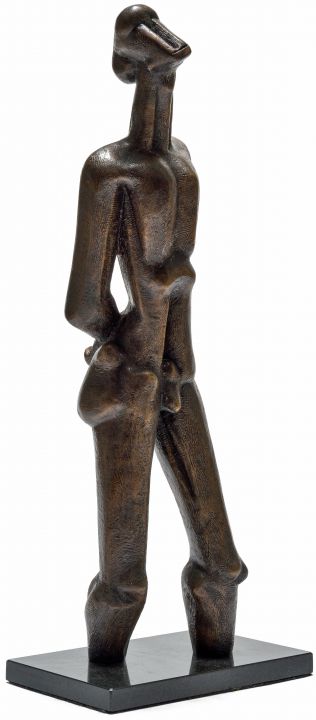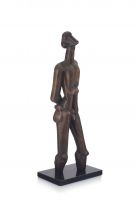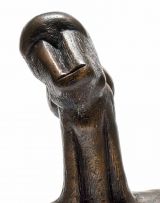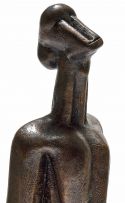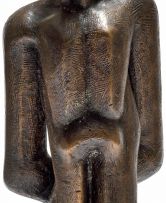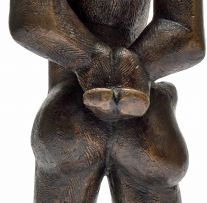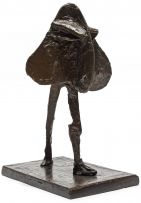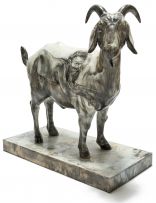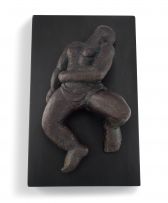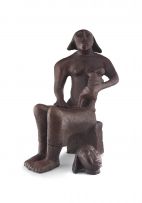Modern, Post-War and Contemporary Art, Decorative Arts, Jewellery and Fine Wine
Live Virtual Auction, 8 - 11 November 2020
Modern, Post-War and Contemporary Art Part II
About this Item
signed and numbered AP2
Notes
Thanks to Dr Gavin Watkins for his assistance in cataloguing this lot.
Another casting of this quickening, magnificent and agonizing work was given pride of place in the artist's first retrospective exhibition, at the Norval Foundation, in 2018. In the crucial catalogue accompanying the exhibition, and within the chapter on the artist by Karel Nel and Elizabeth Burroughs subtitled Political Edge, the work was closely and movingly described:
'The sculpture, one of Legae's most famous, depicts a young man with his hands tied behind his back. His body is defined by a series of articulated cylindrical volumes, which represent the youth's bound arms, his thighs and neck. To some extent the torso itself seems to be formed by two parallel and conjoined cylinders, for a deep groove runs from the stylised penis at the base of the groin, cutting a vertical axis into the chest. At the base of the neck, the groove transforms into a cylinder within the long column of the neck. The grooves on either side of the windpipe and the pronounced Adam's apple speak of the tensions in his body as he tilts his head to his right. Then, surprisingly, the axial groove reasserts itself in the face. This collapse of the features of the face into a deep V-shaped groove terminates at the forehead. When looked at face-on, this erosion of the face suggests deep dejection, and yet, in profile, the angle of the young man's head intimates a more subversive emotion, a quiet and dignified defiance of his situation.'1
1. Elizabeth Burroughs and Karel Nel (eds) (1998) Re/discovery and Memory: The Works of Kumalo, Legae, Nitegeka and Villa, Cape Town: Norval Foundation, pages 181 to 182.
Literature
EJ de Jager (1973) Contemporary Art in South Africa, Cape Town: Struik, another cast from the edition illustrated in black and white, unpaginated.
Dina Katz (1974) 'A Man of Two Worlds: Ezrom Legae', Lantern, Volume XXIV, another cast from the edition illustrated in black and white on page 62.
Esmé Berman (1983) Art and Artists of South Africa, Cape Town: Balkema, another cast from the edition illustrated in black and white on page 405.
Elizabeth Burroughs and Karel Nel (eds) (1998) Re/discovery and Memory: The Works of Kumalo, Legae, Nitegeka and Villa, Cape Town: Norval Foundation, another cast from the edition illustrated in black and white on pages 181 and 182, and in colour on pages 200 and 201.
Elza Miles (2004) Polly Street: The Story of an Art Centre, Johannesburg: The Ampersand Foundation, another cast from the edition illustrated in colour on page 127.
